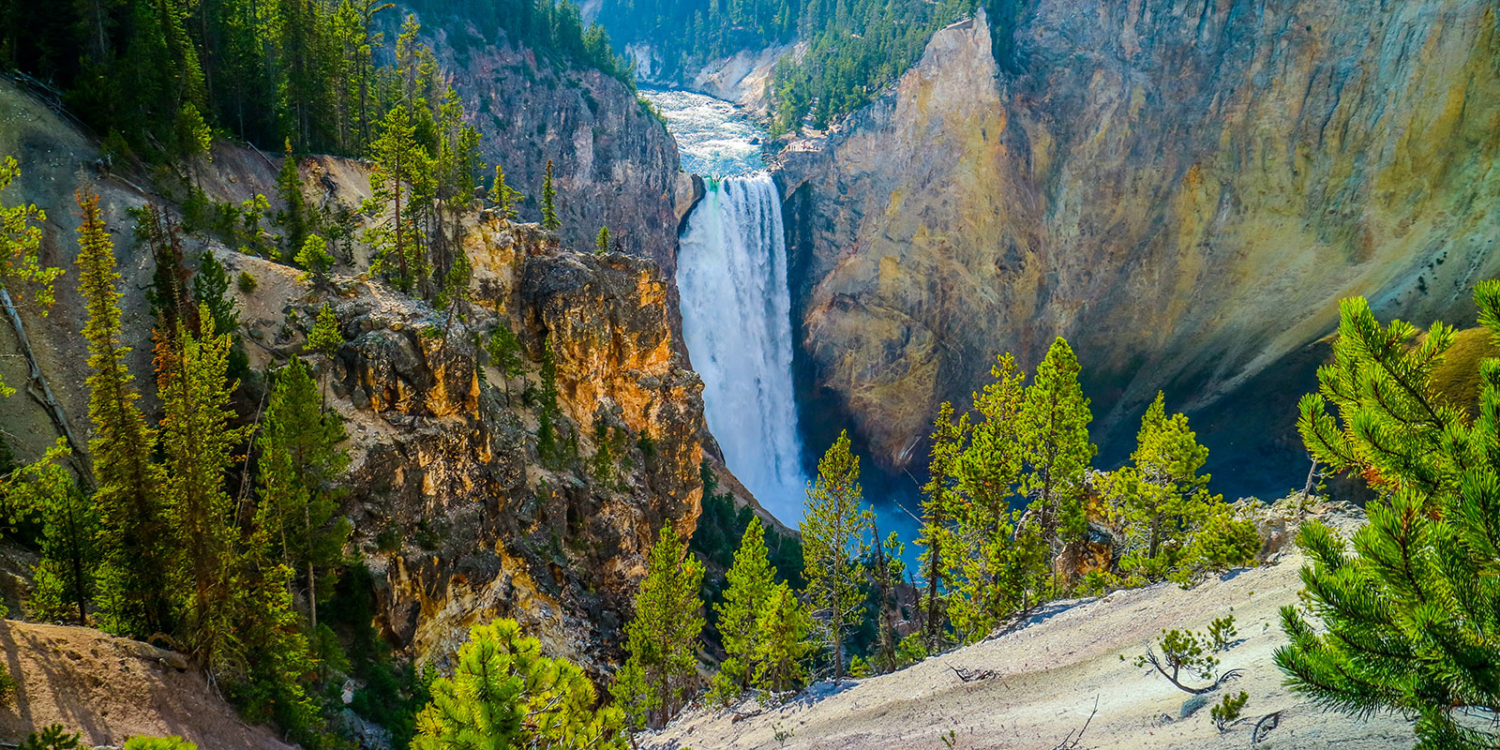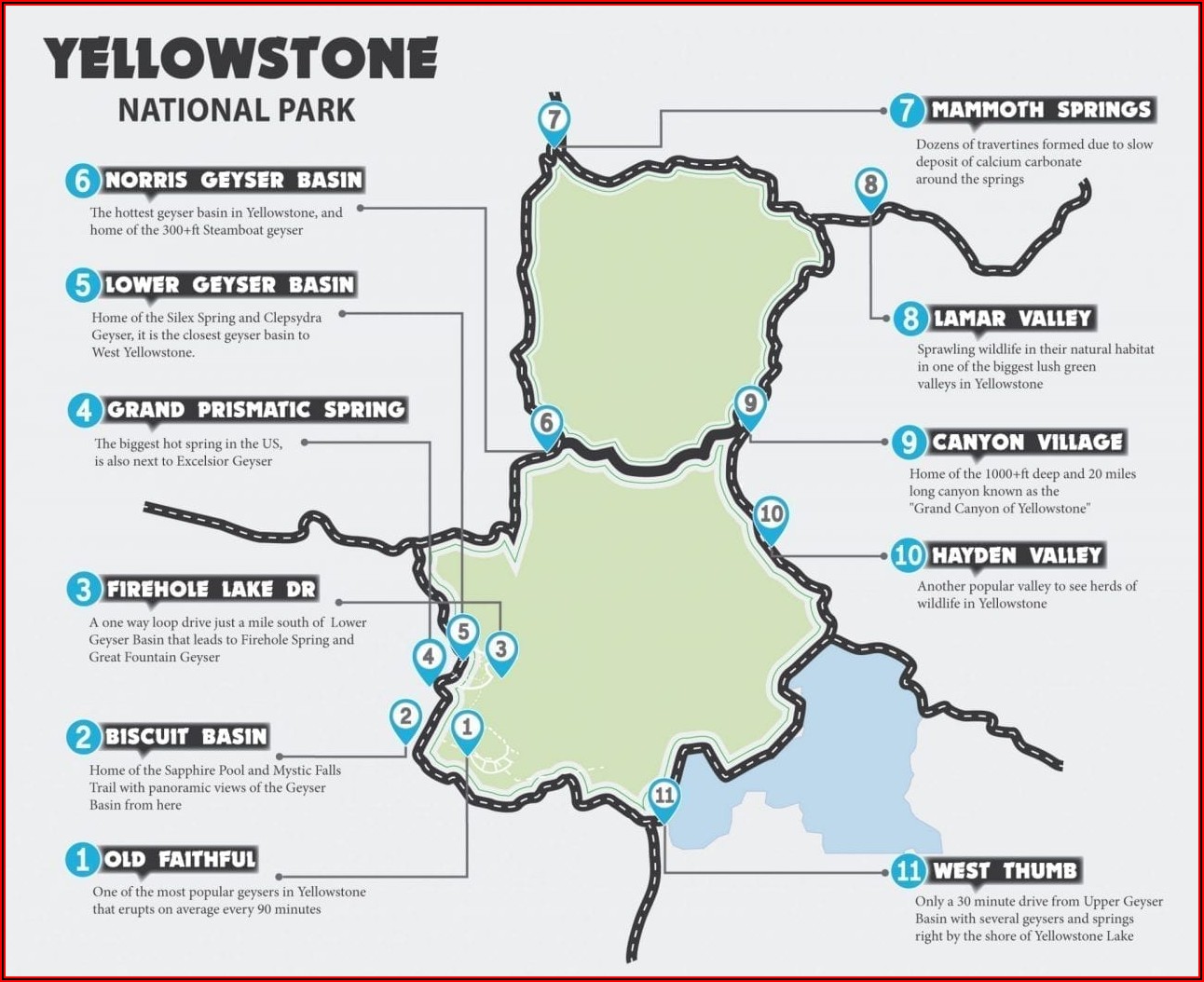Embark on an extraordinary journey through the Yellowstone Lower Loop, where nature’s wonders unfold at every turn. From towering geysers to cascading waterfalls, from abundant wildlife to rich historical significance, this loop offers an unparalleled wilderness experience that will leave you in awe.
As you traverse the loop, immerse yourself in the geothermal wonders of Old Faithful and Norris Geyser Basin. Marvel at the vibrant hues of Grand Prismatic Spring and witness the thunderous force of Lower Falls. Along the way, keep an eye out for the iconic wildlife that calls this ecosystem home, including bears, wolves, bison, and elk.
Yellowstone Lower Loop Overview
The Yellowstone Lower Loop is a popular tourist destination in the western United States. The loop is located in the northwestern corner of Wyoming and includes the southern portion of Yellowstone National Park. The loop is a 142-mile (228-kilometer) road that takes visitors through some of the park’s most popular attractions, including Old Faithful, the Grand Prismatic Spring, and the Norris Geyser Basin.
The Yellowstone Lower Loop is also an important part of the Yellowstone ecosystem. The loop provides access to the park’s geothermal areas, which are home to a variety of plants and animals. The loop also provides access to the park’s backcountry, which is home to a variety of wildlife, including bears, wolves, and elk.
Key Features
- Old Faithful: Old Faithful is one of the most popular geysers in the world. The geyser erupts about every 90 minutes, sending a column of water and steam up to 180 feet (55 meters) into the air.
- Grand Prismatic Spring: Grand Prismatic Spring is the largest hot spring in the United States. The spring is known for its colorful microbial mats, which create a rainbow of colors around the edge of the spring.
- Norris Geyser Basin: Norris Geyser Basin is one of the most active geyser basins in the world. The basin is home to over 100 geysers, including Steamboat Geyser, which is the tallest geyser in the world.
- Yellowstone Lake: Yellowstone Lake is the largest lake in the Rocky Mountains. The lake is home to a variety of fish, including cutthroat trout and rainbow trout.
Natural Wonders and Landscapes
Yellowstone National Park’s Lower Loop is a geological wonderland, showcasing an extraordinary array of natural wonders and landscapes. From the iconic Old Faithful geyser to the vibrant hot springs, thundering waterfalls, and dramatic canyons, the Lower Loop offers a captivating journey through Earth’s dynamic processes.
Geysers
Geysers are a defining feature of Yellowstone, and the Lower Loop is home to some of the most spectacular. Old Faithful, the most famous geyser in the world, erupts regularly, captivating visitors with its towering plume of steam and hot water.
Other notable geysers include Grand Geyser, Castle Geyser, and Riverside Geyser, each with its unique eruption patterns and mesmerizing beauty.
Understand how the union of camp bar tosa can improve efficiency and productivity.
Hot Springs
Hot springs are another abundant feature in the Lower Loop, adding vibrant hues to the landscape. The most famous hot spring is the Grand Prismatic Spring, known for its breathtaking rainbow-colored terraces. Morning Glory Pool, with its deep blue waters, and Excelsior Geyser, the largest hot spring in the world, are also must-see attractions.
Waterfalls
The Lower Loop is blessed with several stunning waterfalls, each showcasing the power and beauty of water. Lower Falls of the Yellowstone River, with its thunderous cascade, is a sight to behold. Other notable waterfalls include Gibbon Falls, a picturesque cascade surrounded by lush vegetation, and Kepler Cascades, a series of cascading waterfalls.
Canyons
The Lower Loop also features dramatic canyons, revealing the geological forces that have shaped the region. The Grand Canyon of the Yellowstone is the most impressive, with its steep cliffs and vibrant colors. The Black Canyon of the Yellowstone River is another stunning canyon, offering breathtaking views from its rim.
Wildlife Encounters
The Lower Loop of Yellowstone National Park is renowned for its abundant and diverse wildlife. Visitors can expect to encounter a wide array of species, including bears, wolves, bison, elk, and a multitude of bird species.
Responsible wildlife viewing is paramount in the park. Visitors are advised to maintain a safe distance from animals, avoid approaching or feeding them, and remain on designated trails. By adhering to these guidelines, both humans and wildlife can coexist harmoniously.
Bear Safety
- Carry bear spray and know how to use it.
- Make noise while hiking, especially in areas with limited visibility.
- Store food and scented items securely in bear-resistant containers.
- If you encounter a bear, remain calm and slowly back away. Do not run or make sudden movements.
Wolf Encounters
Wolves are often elusive, but visitors may be fortunate enough to spot them during their stay in the Lower Loop. These majestic animals typically hunt in packs, and their howls can be heard echoing through the wilderness.
Bison Encounters, Yellowstone lower loop
Bison are the largest land mammals in North America and can be frequently observed grazing in the open meadows of the Lower Loop. While these animals may appear docile, they can be unpredictable and dangerous. Visitors should maintain a safe distance and avoid approaching them.
Elk Encounters
Elk are another common sight in the Lower Loop, particularly during the fall rutting season. Their distinctive bugling calls can be heard throughout the park during this time.
Birdwatching
The Lower Loop is a birdwatcher’s paradise, with over 200 species of birds documented in the area. Visitors can spot a variety of raptors, waterfowl, and songbirds, including bald eagles, great horned owls, and red-tailed hawks.
Historical and Cultural Significance
The Lower Loop of Yellowstone National Park is steeped in historical and cultural significance, reflecting the region’s rich tapestry of human history and natural heritage.
The area holds deep importance for Native American tribes, who have inhabited the region for centuries. They revered the land as sacred and believed it to be a place of great spiritual significance. Evidence of their presence can be found in archaeological sites, petroglyphs, and oral traditions.
Early Exploration
European explorers first entered the Lower Loop in the early 19th century, drawn by tales of its natural wonders. John Colter, a member of the Lewis and Clark Expedition, provided the first written accounts of the area’s geysers and hot springs in 1807.
Further details about princess lodges in alaska is accessible to provide you additional insights.
Subsequent expeditions by explorers such as John Frémont and Ferdinand Vandeveer Hayden further documented the region’s unique geological features.
Establishment of Yellowstone National Park
The Lower Loop played a pivotal role in the establishment of Yellowstone National Park. In 1872, Congress designated the area as the first national park in the United States, recognizing its exceptional natural beauty and scientific importance. The park’s creation marked a significant milestone in conservation history and set a precedent for the protection of natural areas.
Cultural Heritage
The Lower Loop has had a profound impact on the cultural heritage of the region. Its natural wonders have inspired artists, writers, and photographers, leaving an enduring legacy in American culture. The area has also been a source of economic and recreational opportunities for local communities, fostering a deep connection between people and place.
Preservation and Protection
Today, there are ongoing efforts to preserve and protect the historical and cultural resources of the Lower Loop. The National Park Service implements management plans to ensure the integrity of archaeological sites, protect cultural landscapes, and interpret the region’s rich history for visitors.
Partnerships with Native American tribes play a crucial role in ensuring the cultural heritage of the area is respected and honored.
Hiking Trails and Scenic Drives
The Lower Loop of Yellowstone National Park offers a wide range of hiking trails and scenic drives, providing visitors with opportunities to explore the park’s diverse landscapes and wildlife.
Hiking Trails
The Lower Loop features several popular hiking trails, each offering unique attractions and challenges. The following table provides an overview of some of the most notable trails:| Trail Name | Length (miles) | Difficulty Level | Key Attractions | Recommended Itinerary ||—|—|—|—|—|| Uncle Tom’s Trail | 0.5 | Easy | Mammoth Hot Springs Terraces | Short loop, ideal for families || Bunsen Peak Trail | 1.2 | Moderate | Panoramic views of the Norris Geyser Basin | Moderate hike with some elevation gain || Mystic Falls Trail | 2.6 | Moderate | Mystic Falls | Loop trail with moderate elevation gain || Wraith Falls Trail | 2.8 | Moderate | Wraith Falls | Loop trail with moderate elevation gain || Fairy Falls Trail | 5.4 | Strenuous | Fairy Falls | Out-and-back trail with significant elevation gain |
Scenic Drives
The Lower Loop also boasts several scenic drives that allow visitors to experience the park’s natural beauty from the comfort of their vehicles. The following are some of the most popular drives:
Norris to Canyon Village Drive
Find out further about the benefits of rustic furniture okc that can provide significant benefits.
This 20-mile drive passes through the Norris Geyser Basin, Gibbon Falls, and the Grand Canyon of the Yellowstone.
Canyon Village to Tower-Roosevelt Drive
This 40-mile drive offers panoramic views of the Grand Canyon of the Yellowstone and the Tower-Roosevelt area.
Obtain access to classic slice menu to private resources that are additional.
Tower-Roosevelt to Mammoth Hot Springs Drive
This 45-mile drive passes through the Tower-Roosevelt area, Lamar Valley, and the Mammoth Hot Springs.
Tips for Planning and Enjoying Hikes and Drives
To ensure a safe and enjoyable experience while hiking or driving in the Lower Loop, consider the following tips:
Check the weather forecast
Be prepared for sudden weather changes, especially during the summer months.
Wear appropriate clothing and footwear
Find out about how movies newburgh ny can deliver the best answers for your issues.
Choose comfortable, moisture-wicking clothing and sturdy hiking shoes or boots.
Carry plenty of water and snacks
Stay hydrated and energized throughout your hike or drive.
Be aware of wildlife
Keep a safe distance from wildlife and never approach or feed them.
Respect the park’s regulations
Follow all posted signs and regulations to protect the park’s resources and wildlife.
End of Discussion
The Yellowstone Lower Loop is a testament to the power and beauty of nature. Whether you’re a seasoned hiker, a wildlife enthusiast, or simply seeking a breathtaking escape, this loop offers an unforgettable adventure that will stay with you long after your visit.
Helpful Answers: Yellowstone Lower Loop
What is the best time to visit the Yellowstone Lower Loop?
The best time to visit is during the summer months (June-August) when the weather is warm and the wildlife is most active. However, the loop is open year-round and offers different experiences in each season.
How long does it take to drive the Yellowstone Lower Loop?
The loop is approximately 90 miles long and takes about 4-5 hours to drive without stops. However, it’s recommended to allow more time to explore the attractions and wildlife along the way.
Are there any fees to enter the Yellowstone Lower Loop?
Yes, there is an entrance fee to enter Yellowstone National Park, which includes access to the Lower Loop. The fee varies depending on the time of year and method of entry.





